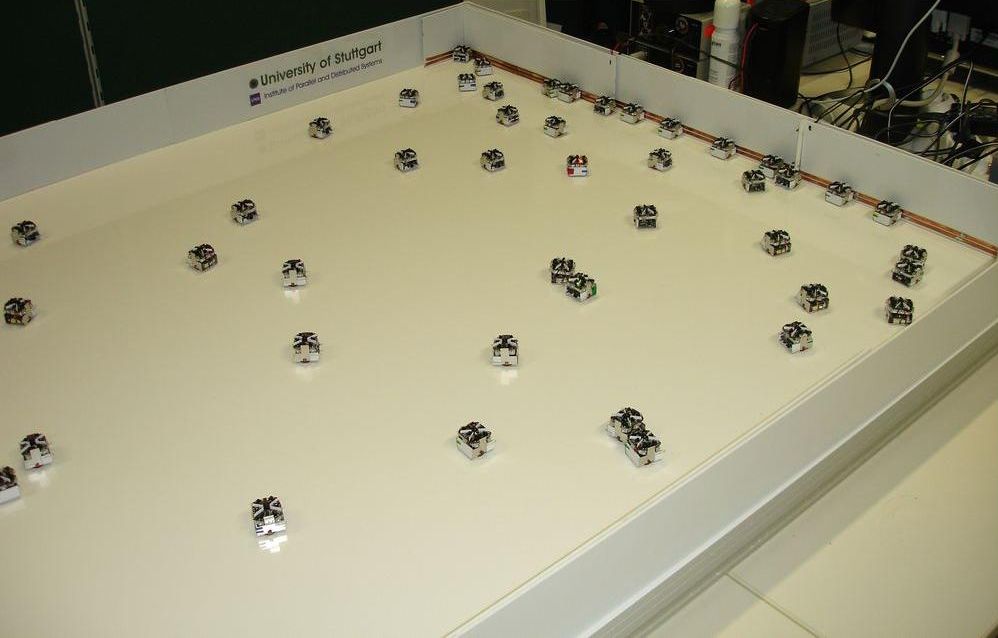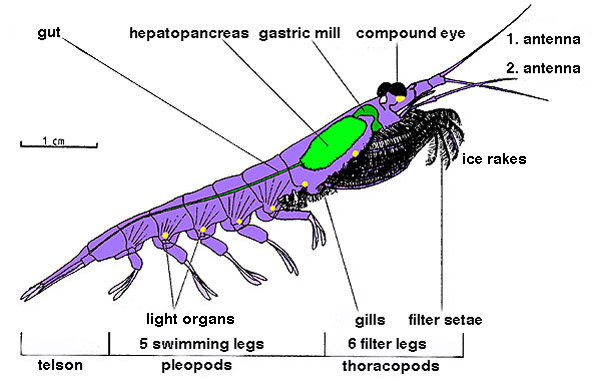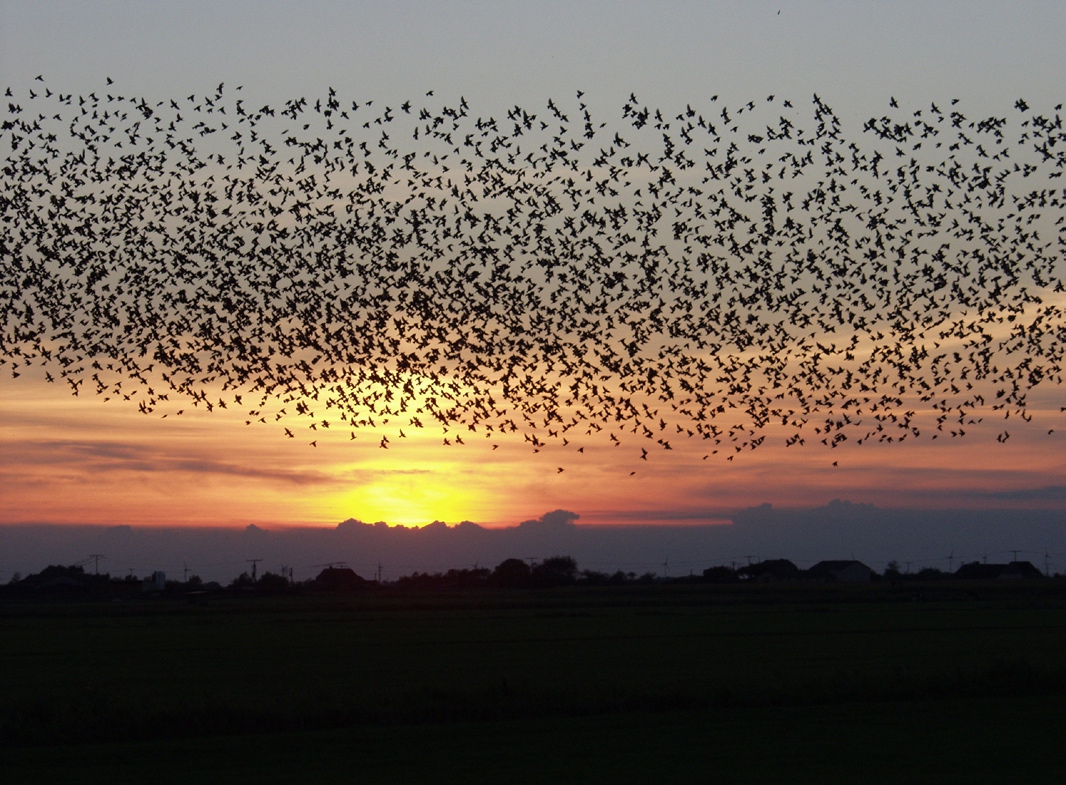|
SWARM
Swarm behaviour, or swarming, is a collective behaviour exhibited by entities, particularly animals, of similar size which aggregate together, perhaps milling about the same spot or perhaps moving ''en masse'' or migrating in some direction. It is a highly interdisciplinary topic. As a term, ''swarming'' is applied particularly to insects, but can also be applied to any other entity or animal that exhibits swarm behaviour. The term '' flocking'' or ''murmuration'' can refer specifically to swarm behaviour in birds, ''herding'' to refer to swarm behaviour in tetrapods, and ''shoaling'' or ''schooling'' to refer to swarm behaviour in fish. Phytoplankton also gather in huge swarms called ''blooms'', although these organisms are algae and are not self-propelled the way animals are. By extension, the term "swarm" is applied also to inanimate entities which exhibit parallel behaviours, as in a robot swarm, an earthquake swarm, or a swarm of stars. From a more abstract point of v ... [...More Info...] [...Related Items...] OR: [Wikipedia] [Google] [Baidu] |
Earthquake Swarm
In seismology, an earthquake swarm is a sequence of seismic events occurring in a local area within a relatively short period. The time span used to define a swarm varies, but may be days, months, or years. Such an energy release is different from the situation when a major earthquake (main shock) is followed by a series of aftershocks: in earthquake swarms, no single earthquake in the sequence is obviously the main shock. In particular, a cluster of aftershocks occurring after a mainshock ''is not'' a swarm. History and generalities In the Ore Mountains (Erzgebirge), which form the border between the Czech Republic and Germany, western Bohemia and the Vogtland region, have been known since the 16th century as prone to frequent earthquake swarms, which typically last a few weeks to a few months. Austrian geologist Josef Knett, while studying in 1899 a swarm of about a hundred events felt in western Bohemia/Vogtland in January-February 1824, coined the noun ''Schwarmbeben'', ' ... [...More Info...] [...Related Items...] OR: [Wikipedia] [Google] [Baidu] |
Swarm Robotics
Swarm robotics is an approach to the coordination of multiple robots as a system which consist of large numbers of mostly simple physical robots. ″In a robot swarm, the collective behavior of the robots results from local interactions between the robots and between the robots and the environment in which they act.″ It is supposed that a desired collective behavior emerges from the interactions between the robots and interactions of robots with the environment. This approach emerged on the field of artificial swarm intelligence, as well as the biological studies of insects, ants and other fields in nature, where swarm behaviour occurs. Definition The research of swarm robotics is to study the design of robots, their physical body and their controlling behaviours. It is inspired but not limited by the emergent behaviour observed in social insects, called swarm intelligence. Relatively simple individual rules can produce a large set of complex swarm behaviours. A key compone ... [...More Info...] [...Related Items...] OR: [Wikipedia] [Google] [Baidu] |
Krill
Krill are small crustaceans of the order Euphausiacea, and are found in all the world's oceans. The name "krill" comes from the Norwegian Norwegian, Norwayan, or Norsk may refer to: *Something of, from, or related to Norway, a country in northwestern Europe * Norwegians, both a nation and an ethnic group native to Norway * Demographics of Norway *The Norwegian language, including ... word ', meaning "small fry of fish", which is also often attributed to species of fish. Krill are considered an important trophic level connection – near the bottom of the food chain. They feed on phytoplankton and (to a lesser extent) zooplankton, yet also are the main source of food for many larger animals. In the Southern Ocean, one species, the Antarctic krill, ''Euphausia superba'', makes up an estimated biomass (ecology), biomass of around 379,000,000 tonnes, making it among the species with the largest total biomass. Over half of this biomass is eaten by whales, Pinniped, seals, pen ... [...More Info...] [...Related Items...] OR: [Wikipedia] [Google] [Baidu] |
Self-propelled Particles
Self-propelled particles (SPP), also referred to as self-driven particles, are terms used by physicists to describe autonomous agents, which convert energy from the environment into directed or persistent motion. Natural systems which have inspired the study and design of these particles include walking, swimming or flying animals. Other biological systems include bacteria, cells, algae and other micro-organisms. Generally, self-propelled particles often refer to artificial systems such as robots or specifically designed particles such as swimming Janus colloids, bimetallic nanorods, nanomotors and walking grains. In the case of directed propulsion, which is driven by a chemical gradient, this is referred to as chemotaxis, observed in biological systems, e.g. bacteria quorum sensing and ant pheromone detection, and in synthetic systems, e.g. enzyme molecule chemotaxis and enzyme powered hard and soft particles. Overview Self-propelled particles interact with each other, which c ... [...More Info...] [...Related Items...] OR: [Wikipedia] [Google] [Baidu] |
Flocking (behavior)
Flocking is the behaviour exhibited when a group of birds, called a flock, are foraging or in flight. Computer simulations and mathematical models that have been developed to emulate the flocking behaviours of birds can also generally be applied to the "flocking" behaviour of other species. As a result, the term "flocking" is sometimes applied, in computer science, to species other than birds. This article is about the modelling of flocking behaviour. From the perspective of the mathematical modeller, "flocking" is the collective motion by a group of self-propelled entities and is a collective animal behaviour exhibited by many living beings such as birds, fish, bacteria, and insects. It is considered an emergent behaviour arising from simple rules that are followed by individuals and does not involve any central coordination. In nature There are parallels with the shoaling behaviour of fish, the swarming behaviour of insects, and herd behaviour of land animals. During the ... [...More Info...] [...Related Items...] OR: [Wikipedia] [Google] [Baidu] |
Genetic Algorithm
In computer science and operations research, a genetic algorithm (GA) is a metaheuristic inspired by the process of natural selection that belongs to the larger class of evolutionary algorithms (EA). Genetic algorithms are commonly used to generate high-quality solutions to optimization and search problems by relying on biologically inspired operators such as mutation, crossover and selection. Some examples of GA applications include optimizing decision trees for better performance, solving sudoku puzzles, hyperparameter optimization, etc. Methodology Optimization problems In a genetic algorithm, a population of candidate solutions (called individuals, creatures, organisms, or phenotypes) to an optimization problem is evolved toward better solutions. Each candidate solution has a set of properties (its chromosomes or genotype) which can be mutated and altered; traditionally, solutions are represented in binary as strings of 0s and 1s, but other encodings are also possible. ... [...More Info...] [...Related Items...] OR: [Wikipedia] [Google] [Baidu] |
Active Matter
Active matter is matter composed of large numbers of active "agents", each of which consumes energy in order to move or to exert mechanical forces. Such systems are intrinsically out of thermal equilibrium. Unlike thermal systems relaxing towards equilibrium and systems with boundary conditions imposing steady currents, active matter systems break time reversal symmetry because energy is being continually dissipated by the individual constituents. Most examples of active matter are biological in origin and span all the scales of the living, from bacteria and self-organising bio-polymers such as microtubules and actin (both of which are part of the cytoskeleton of living cells), to schools of fish and flocks of birds. However, a great deal of current experimental work is devoted to synthetic systems such as artificial self-propelled particles. Active matter is a relatively new material classification in soft matter: the most extensively studied model, the Vicsek model, dates fro ... [...More Info...] [...Related Items...] OR: [Wikipedia] [Google] [Baidu] |
Shoaling And Schooling
In biology, any group of fish that stay together for social reasons are shoaling, and if the group is swimming in the same direction in a coordinated manner, they are schooling. In common usage, the terms are sometimes used rather loosely. About one quarter of fish species shoal all their lives, and about one half shoal for part of their lives. Fish derive many benefits from shoaling behaviour including defence against predators (through better predator detection and by diluting the chance of individual capture), enhanced foraging success, and higher success in finding a mate. It is also likely that fish benefit from shoal membership through increased hydrodynamic efficiency. Fish use many traits to choose shoalmates. Generally they prefer larger shoals, shoalmates of their own species, shoalmates similar in size and appearance to themselves, healthy fish, and kin (when recognized). The oddity effect posits that any shoal member that stands out in appearance will be preferen ... [...More Info...] [...Related Items...] OR: [Wikipedia] [Google] [Baidu] |
Boids
Boids is an artificial life program, developed by Craig Reynolds in 1986, which simulates the flocking behaviour of birds. His paper on this topic was published in 1987 in the proceedings of the ACM SIGGRAPH conference. The name "boid" corresponds to a shortened version of "bird-oid object", which refers to a bird-like object. "Boid" is also a New York Metropolitan dialect pronunciation for "bird." As with most artificial life simulations, Boids is an example of emergent behavior; that is, the complexity of Boids arises from the interaction of individual agents (the boids, in this case) adhering to a set of simple rules. The rules applied in the simplest Boids world are as follows: * separation: steer to avoid crowding local flockmates * alignment: steer towards the average heading of local flockmates * cohesion: steer to move towards the average position (center of mass) of local flockmates More complex rules can be added, such as obstacle avoidance and goal seeking. ... [...More Info...] [...Related Items...] OR: [Wikipedia] [Google] [Baidu] |
Collective Animal Behaviour
Collective animal behaviour is a form of social behavior involving the coordinated behavior of large groups of similar animals as well as emergent properties of these groups. This can include the costs and benefits of group membership, the transfer of information, decision-making process, locomotion and synchronization of the group. Studying the principles of collective animal behavior has relevance to human engineering problems through the philosophy of biomimetics. For instance, determining the rules by which an individual animal navigates relative to its neighbors in a group can lead to advances in the deployment and control of groups of swimming or flying micro-robots such as UAVs (Unmanned Aerial Vehicles). Examples Examples of collective animal behavior include: * Flocking birds * Herding ungulates * Shoaling and schooling fish * Schooling Antarctic krill * Pods of dolphins * Marching locusts * Nest building ants * Swarming * Stampede History The basis of collectiv ... [...More Info...] [...Related Items...] OR: [Wikipedia] [Google] [Baidu] |
Emergence
In philosophy, systems theory, science, and art, emergence occurs when an entity is observed to have properties its parts do not have on their own, properties or behaviors that emerge only when the parts interact in a wider whole. Emergence plays a central role in theories of integrative levels and of complex systems. For instance, the phenomenon of life as studied in biology is an emergent property of chemistry. In philosophy, theories that emphasize emergent properties have been called emergentism. In philosophy Philosophers often understand emergence as a claim about the etiology of a system's properties. An emergent property of a system, in this context, is one that is not a property of any component of that system, but is still a feature of the system as a whole. Nicolai Hartmann (1882–1950), one of the first modern philosophers to write on emergence, termed this a ''categorial novum'' (new category). Definitions This concept of emergence dates from at least the ... [...More Info...] [...Related Items...] OR: [Wikipedia] [Google] [Baidu] |
Animal Migration
Animal migration is the relatively long-distance movement of individual animals, usually on a seasonal basis. It is the most common form of migration in ecology. It is found in all major animal groups, including birds, mammals, fish, reptiles, amphibians, insects, and crustaceans. The cause of migration may be local climate, local availability of food, the season of the year or for mating. To be counted as a true migration, and not just a local dispersal or irruption, the movement of the animals should be an annual or seasonal occurrence, or a major habitat change as part of their life. An annual event could include Northern Hemisphere birds migrating south for the winter, or wildebeest migrating annually for seasonal grazing. A major habitat change could include young Atlantic salmon or sea lamprey leaving the river of their birth when they have reached a few inches in size. Some traditional forms of human migration fit this pattern. Migrations can be studied using traditi ... [...More Info...] [...Related Items...] OR: [Wikipedia] [Google] [Baidu] |









